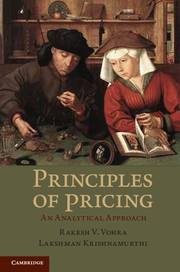3 - Estimating Price Response
Published online by Cambridge University Press: 05 June 2012
Summary
If one takes the rational buyer model seriously, the most important challenge for the seller is determining how a buyer will respond to a price. For this reason, we begin this chapter with a laundry list of methods for estimating how buyers will respond to price.
1. Managerial judgment. A simple way is to use the accumulated knowledge of product managers, salespeople, and members of the product engineering team to arrive at a demand curve for the product or service. Subjects are given a product book that provides information on items such as product sales and product price, as well as competitive sales and competitive prices. After digesting this information, the subjects are asked how much, in percentage terms, sales are likely to change for an X percent price increase where X is incremented in some fashion, say 2 percent, 4 percent, and so on, up to 10 percent, followed by the same questions for an X percent price decrease. Subjects should be asked to think about competitive response during the exercise, so the obtained demand curve reflects a realistic state of the world. For each price response, the subjects should identify a source-of-volume model, which is a way to describe how the composition of buyers (those who buy from this seller, those who buy from the competition, and those who currently buy from no one) changes as a function of a price change.
- Type
- Chapter
- Information
- Principles of PricingAn Analytical Approach, pp. 15 - 35Publisher: Cambridge University PressPrint publication year: 2012



